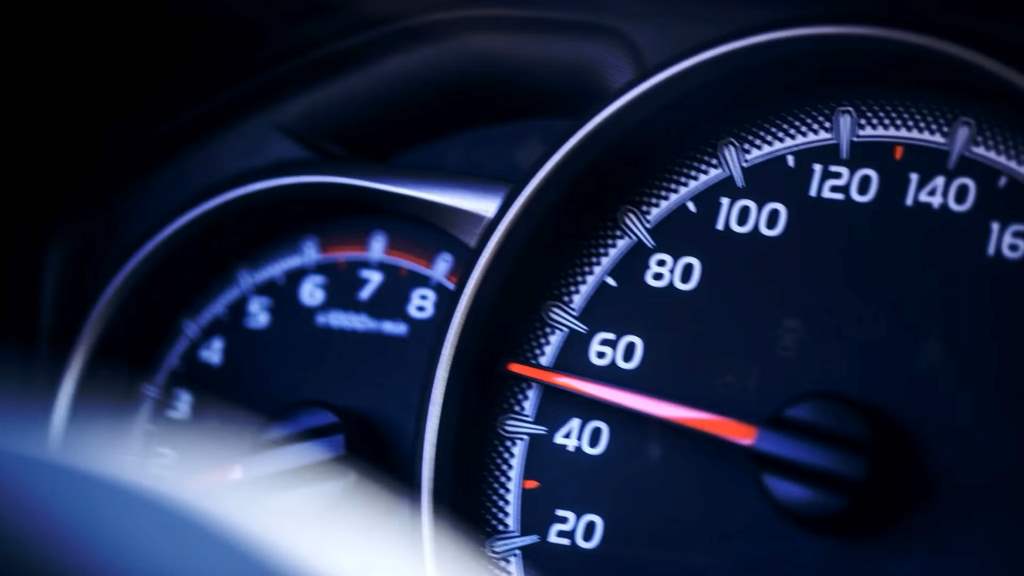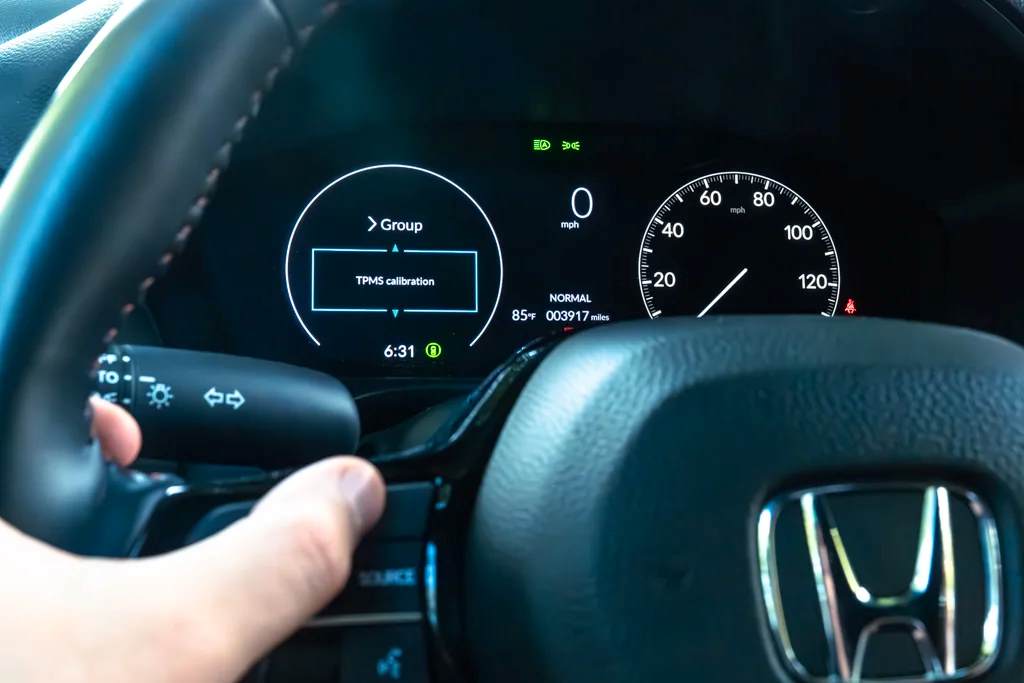Changing your car’s tire size can enhance its performance, aesthetics, or handling, but it may also affect the accuracy of your speedometer. A miscalibrated speedometer can lead to incorrect speed readings, impacting safety, fuel efficiency, and even legal compliance. At Bee Buze, we aim to provide practical automotive insights to keep your vehicle running smoothly. This article explains why speedometer calibration is necessary after changing tire sizes, how to do it, and what to consider to ensure accuracy and safety.
Why Tire Size Affects Your Speedometer
Your car’s speedometer is designed to calculate speed based on the tire size specified by the manufacturer. The speedometer relies on the revolutions per mile (or kilometer) of the tires, which is determined by their diameter. When you install larger or smaller tires, the number of revolutions changes, causing the speedometer to display inaccurate speeds. For example, larger tires cover more ground per rotation, making the speedometer underreport your actual speed, while smaller tires do the opposite. This discrepancy can lead to speeding tickets, improper gear shifts in manual transmissions, or even issues with systems like what port does transmission use to start engine, as modern vehicles rely on precise data for optimal performance.
Moreover, an inaccurate speedometer can affect other vehicle systems, such as the odometer, which tracks mileage, and the transmission, which may shift gears based on incorrect speed data. Therefore, recalibrating the speedometer after changing tire sizes is essential to maintain accuracy and ensure your car operates as intended.
How Tire Size Changes Impact Vehicle Performance
Before diving into calibration methods, it’s worth understanding how tire size changes affect your vehicle. Larger tires may improve traction and handling but can increase fuel consumption due to added weight and rolling resistance. Smaller tires might enhance acceleration but could reduce stability at high speeds. Additionally, tire size changes can alter the gear ratio, affecting how the engine and transmission interact. This is particularly relevant for systems like the transmission control module, which relies on accurate speed data to function correctly.
Consequently, failing to recalibrate your speedometer can lead to long-term issues, such as increased wear on drivetrain components or incorrect mileage tracking, which could affect your vehicle’s resale value. To avoid these problems, calibration ensures all systems work harmoniously with the new tire size.
Methods to Calibrate Your Speedometer

There are several ways to recalibrate your speedometer after installing new tires. Each method varies in complexity, cost, and accuracy, so choose the one that best suits your needs. Below are the most common approaches:
- Use a GPS Device for Comparison: A simple way to check your speedometer’s accuracy is by comparing it to a GPS device, such as a smartphone app or a dedicated GPS unit. Drive at a steady speed and note the difference between the GPS reading and your speedometer. While this method doesn’t recalibrate the speedometer, it helps you understand the discrepancy and adjust your driving accordingly.
- Adjust Through the Vehicle’s ECU: Many modern vehicles allow speedometer recalibration through the engine control unit (ECU). This requires a professional mechanic or a specialized tool, such as an OBD-II scanner, to reprogram the ECU with the new tire size parameters. Some vehicles have built-in settings for tire size adjustments, accessible through the dashboard menu.
- Install a Speedometer Calibrator: Aftermarket speedometer calibrators, like those from Hypertech or Superchips, can adjust the speedometer by connecting to the vehicle’s OBD-II port. These devices modify the ECU settings to account for the new tire size, ensuring accurate readings.
- Visit a Professional Mechanic: If you’re unsure about performing the calibration yourself, a professional mechanic or tire shop can handle the process. They have the tools and expertise to recalibrate the speedometer accurately, often using diagnostic software tailored to your vehicle’s make and model.
- Replace the Speedometer Gear (Older Vehicles): In older vehicles with mechanical speedometers, calibration may involve replacing the speedometer gear in the transmission. This requires calculating the correct gear ratio based on the new tire size, a process best left to professionals.
Each method has its advantages. For instance, GPS comparison is cost-effective but temporary, while ECU reprogramming offers a permanent solution. However, always verify the calibration after making adjustments to ensure accuracy.
Steps to Calibrate Your Speedometer Yourself
If you choose to calibrate your speedometer using an OBD-II scanner or a calibrator device, follow these general steps:
- Determine the New Tire Size: Measure the diameter of your new tires or check the tire specifications (e.g., 225/55R17). Compare this to the original tire size listed in your vehicle’s manual.
- Calculate the Speedometer Error: Use an online tire size calculator, such as the one provided by Tire Rack, to determine the percentage difference in revolutions per mile between the old and new tires.
- Acquire a Calibration Tool: Purchase or borrow an OBD-II scanner or speedometer calibrator compatible with your vehicle. Ensure it supports tire size adjustments.
- Connect the Device: Plug the calibrator into the OBD-II port, typically located under the dashboard. Follow the device’s instructions to access the ECU settings.
- Input the New Tire Size: Enter the new tire dimensions into the calibrator or select the appropriate settings. Some devices allow you to input the percentage difference calculated earlier.
- Test the Calibration: Drive your vehicle and compare the speedometer reading to a GPS device. If the readings align, the calibration is successful. If not, repeat the process or consult a professional.
These steps assume your vehicle supports ECU-based calibration. For older vehicles with mechanical speedometers, consult a mechanic to replace the speedometer gear.
Considerations for Accurate Calibration
When calibrating your speedometer, keep the following in mind to ensure accuracy and safety:
- Verify Tire Specifications: Double-check the tire size, as even small errors in measurement can lead to inaccurate calibration.
- Check Vehicle Compatibility: Not all vehicles allow easy ECU reprogramming. Consult your vehicle’s manual or manufacturer to confirm compatibility.
- Test Under Real Conditions: Conduct multiple tests at different speeds to ensure the speedometer is accurate across the range.
- Comply with Local Regulations: Some regions have strict rules about tire size changes. Ensure your new tires meet legal requirements to avoid fines.
- Monitor Related Systems: After calibration, check if other systems, like the transmission or ABS, function correctly, as tire size changes can affect them.
By addressing these factors, you can avoid common pitfalls and ensure a smooth calibration process.
Read More:
How to Remove Tree Sap Without Damaging Car Paint
Proven DIY Ways to Quiet Squeaky Car Brakes Using Common Household Products
FAQs
Why does my speedometer need recalibration after changing tire sizes?
Changing tire sizes alters the number of tire revolutions per mile, which affects the speedometer’s calculations. Recalibration ensures the speedometer reflects the actual speed.
Can I drive without recalibrating my speedometer?
You can drive, but an uncalibrated speedometer may lead to inaccurate speed readings, affecting safety, fuel efficiency, and legal compliance.
How much does professional speedometer calibration cost?
Costs vary depending on the vehicle and location, typically ranging from $50 to $150. Check with local mechanics or tire shops for accurate pricing.
Can I use a smartphone app to calibrate my speedometer?
Smartphone apps with GPS can help you identify speedometer errors but cannot recalibrate the speedometer. You’ll need an OBD-II scanner or professional assistance for calibration.
Will changing tire sizes void my vehicle’s warranty?
Changing tire sizes usually doesn’t void the warranty unless the change directly causes damage. Consult your manufacturer or warranty terms to confirm.
Conclusion
Calibrating your car’s speedometer after changing tire sizes is a critical step to ensure accurate speed readings, improve safety, and maintain optimal vehicle performance. Whether you use a GPS device for comparison, reprogram the ECU, or seek professional help, proper calibration prevents issues like speeding tickets, incorrect mileage tracking, or transmission problems. By following the steps outlined and considering factors like tire specifications and vehicle compatibility, you can confidently adjust your speedometer. For more automotive tips, resources like Car and Driver offer valuable insights to keep your vehicle in top shape.


